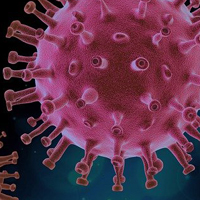Mechanisms of action and adverse effects of the major therapeutic agents in trial for COVID-19 therapeutics: Review of literature

Accepted: 26 May 2021
Appendix: 44
All claims expressed in this article are solely those of the authors and do not necessarily represent those of their affiliated organizations, or those of the publisher, the editors and the reviewers. Any product that may be evaluated in this article or claim that may be made by its manufacturer is not guaranteed or endorsed by the publisher.
Authors
The race to find an effective cure for COVID-19 is on. Most of the candidate drugs in various clinical trials are being re-purposed but none has been approved as at date. It is pertinent for the bedside physicians to understand the mechanisms of action of these agents and their peculiar adverse effects so they are properly guided on the risk/benefit of the drugs they choose in managing COVID-19 patients. Clinicaltrials.gov, the international clinical trials platform of the WHO, the EU clinical trials register and the Cochrane Central Register of Controlled Trials were searched for registered clinical trials. Studies in therapeutic trials were considered eligible for the work. Frequency table was made for the most common trialled drugs and the mechanisms of actions and adverse effects of the selected drugs were reviewed. Ten studies were selected for review in a descending order of their frequency in different therapeutic trials and these are ritonavir, lopinavir, chloroquine/ hydroxychloroquine, interferon, remdesvir, favipravir, umifenovir, darunavir, tocilizumab and methylprednisolone. The bedside physicians need to understand the mechanisms of action of these agents and their peculiar adverse effects for proper guidance on the risk/benefit of the drugs they choose in managing COVID- 19 patients.
Department of Pharmacology/Therapeutics, Ebonyi State University, Abakaliki, Nigeria.
How to Cite
PAGEPress has chosen to apply the Creative Commons Attribution NonCommercial 4.0 International License (CC BY-NC 4.0) to all manuscripts to be published.

 https://doi.org/10.4081/acbr.2021.118
https://doi.org/10.4081/acbr.2021.118



